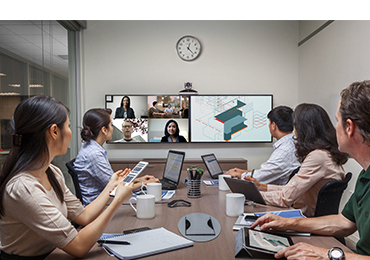The report, entitled: “Global View: Business Video Conferencing Usage and Trends” is the results of a survey of more than 1,200 business decision makers, conducted by Redshift Research and commissioned by Polycom.
When asked to choose their preferred methods of communications today, respondents ranked video conferencing third (47 per cent) after email (89 per cent) and voice/conference calls (64 per cent). But those same business leaders and managers expect video to be their most preferred collaboration tool in three years (52 per cent), followed by email (51 per cent) and voice/conference calls (37 per cent).
Over three quarters of respondents (76 per cent) are now using video conferencing at work with 56 per cent of video users taking part in video calls at least once a week. The survey found that in Brazil, India and Singapore that number jumps up significantly, as more than two-thirds of respondents in those countries use video conferencing at least once a week.
The survey also revealed that 83 per cent of respondents, and almost 90 per cent of those in their 20s and 30s, use consumer video conferencing systems at home today, and almost half of all respondents use video conferencing at home at least once a week.
The study also showed that laptops and desktops are the most popular devices for business video conferencing (75 per cent of respondents), followed by conference rooms (48 per cent) and mobile devices (42 per cent). As video conferencing continues to become more pervasive, in three years laptops and desktops are still expected to be the most preferred device (72 per cent), while mobile devices and conference room usage will increase to 55 and 51 per cent, respectively.
The survey found the top three most important criteria for an ideal video meeting are:
- The ability to hear everyone clearly (69 per cent)
- Technology that is straight forward and easy to use (60 per cent)
- Good eye contact with colleagues/ everyone is clearly visible (58 per cent)
Respondents who use video conferencing said the most distracting things, which should be avoided during video meetings, are:
- Mobile phone going off during a meeting (58 per cent)
- People attending from inappropriate places – e.g., public transit, in stores (52 per cent)
- People who are multi-tasking or look distracted – e.g., tapping on keyboard – (51 per cent)
- Inappropriate background distractions such as colleagues, music, noise (50 per cent).
